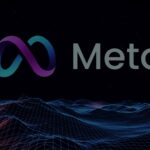In the dynamic realm of digital marketing, understanding the intricacies of Facebook ad funnels is crucial for businesses aiming to convert potential customers into loyal advocates. A well-crafted ad funnel not only attracts attention but also nurtures relationships at every stage of the customer journey. Let’s explore how Facebook ad funnels are structured, from initial awareness to post-purchase satisfaction.

Stage 1: Top of the Funnel (TOFU) – Unaware to Aware
At the top of the Meta ad funnel, the goal is to capture the attention of a broad audience who may not yet be aware of your brand or its offerings.
Objective: Generate awareness and spark interest.
Ad Types:
- Engaging Content: Use engaging videos, informative blog posts, or visually appealing images to introduce your brand and capture interest.
- Brand Awareness Campaigns: Reach a wide audience to increase familiarity with your brand.
Targeting:
- Demographics: Broad targeting based on age, location, and interests.
- Lookalike Audiences: Target users similar to your existing customer base.
Metrics:
- Reach and Impressions: Measure how many people see your ads.
- Engagement Rate: Track likes, shares, and comments to gauge interest.
Stage 2: Middle of the Funnel (MOFU) – Interested
As potential customers move to the middle of the funnel, they become more engaged and interested in what your brand has to offer.
Objective: Nurture leads and build consideration.
Ad Types:
- Educational Content: Provide detailed product guides, testimonials, or case studies to educate your audience.
- Lead Generation Ads: Capture contact information through forms to build your email list.
Targeting:
- Custom Audiences: Retarget users who have interacted with your brand.
- Interests and Behaviors: Segment audiences based on specific interests related to your products or services.
Metrics:
- Click-Through Rate (CTR): Measure the percentage of people who click on your ads.
- Conversion Rate: Track how many users take desired actions (e.g., sign-ups or downloads).
Stage 3: Bottom of the Funnel (BOFU) – Customer
At the bottom of the funnel, the focus shifts to converting interested leads into paying customers.
Objective: Drive conversions and sales.
Ad Types:
- Promotional Offers: Showcase limited-time discounts or special promotions to incentivize purchases.
- Retargeting Ads: Remind users of products they showed interest in but didn’t purchase.
Targeting:
- Custom Audiences (Pixel-based): Target users who have visited specific product pages or added items to their cart.
- Dynamic Product Ads (DPA): Automatically show relevant products based on user behavior.
Metrics:
- Conversion Rate: Measure the percentage of users who complete a purchase.
- Return on Ad Spend (ROAS): Evaluate the revenue generated relative to the amount spent on ads.
Stage 4: Post-Purchase
The journey doesn’t end with a sale. Post-purchase engagement is vital for fostering customer loyalty and advocacy.
Objective: Enhance customer satisfaction and encourage repeat purchases.
Ad Types:
- Thank-You Messages: Show appreciation and reinforce positive buying experiences.
- Cross-Sell/Up-Sell: Recommend related products or services to encourage additional purchases.
Targeting:
- Customer Lists: Segment customers based on purchase history to tailor follow-up messages.
- Loyalty Programs: Promote exclusive offers or rewards for returning customers.
Metrics:
- Customer Lifetime Value (CLTV): Measure the total revenue a customer generates over their lifetime.
- Customer Satisfaction: Monitor feedback and reviews to gauge overall satisfaction.
Conclusion
Mastering the Meta ad funnel involves strategically aligning each stage with your business objectives and customer needs. Businesses can build lasting relationships and maximize their marketing ROI by creating targeted campaigns that guide users from initial awareness to post-purchase satisfaction. Continuous monitoring of key metrics and adapting strategies based on performance insights are essential to optimizing your Facebook ad funnel for sustained success in today’s competitive digital landscape.


